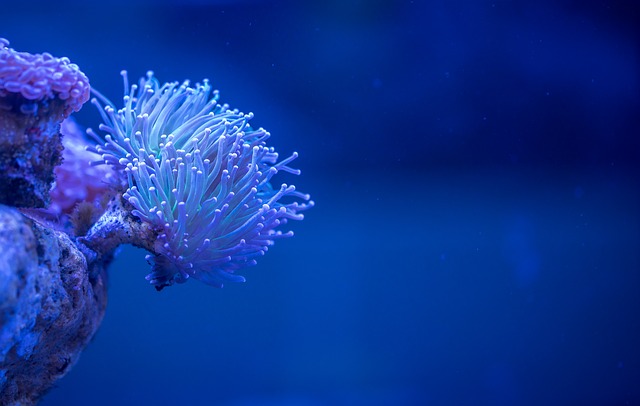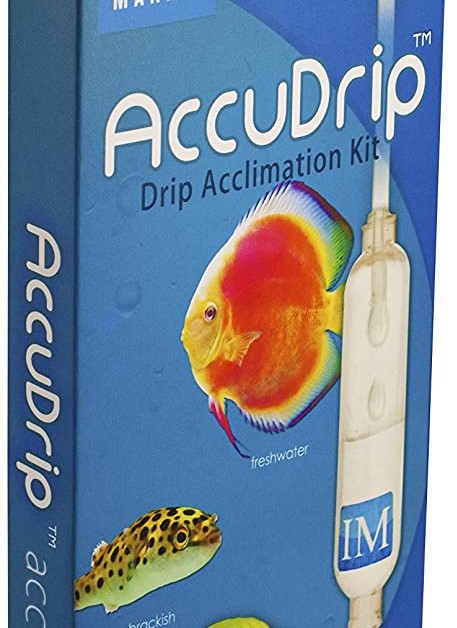
When it comes to purchasing new corals for your reef tank, it is important to understand what the best steps are to provide proper care for your new frag. Whether you purchase them from an online vendor or from your local fish store (LFS), you need to ensure that your coral survives the transition.
Corals can benefit from acclimation, but it is not necessary for most types. Many hobbyist believe that slowly adjusting a new coral will provide the best outcome for it in the long run. However, there is a large portion of marine tank owners that feel the best outcome comes from introducing new corals to moving water as quickly as possible. Whether you choose to or not is a personal preference, but either way can be successful.
Personally, I do not drip acclimate corals because most species of corals can tolerate minor swings in salinity and temperature. If the salinity is not within .005 of my display tank, I may consider doing the floating bag method with adding water over a 30 minute period.
There are several things that most tank owners consider when introducing new corals to their tanks. This is water and light acclimation, as well as dipping for pests. This article will not cover anything related to pests, as that does not fall under the topic being covered here. In addition to that, there is also temperature to consider.
But, why would you even need to do this in the first place? To get your new coral or frag adjusted to the its new home. Whether you get your coral from an online store or from a local shop, it will likely be accustomed to certain water parameters, a specific temperature, and specific lighting. Many reefers believe it is best to slowly introduce a coral to a new environment. Doing this will allow it to adjust instead of immediately transferring it to a new home with different parameters. This of course, is not set in stone as many reef keepers do not find it necessary to slowly introduce corals to their new homes. A lot of people just add their new corals right to their display tank (after dipping for pests.)
Measurements to consider:
- Water Temperature
- Salinity
- Alkalinity
- Ph
These are a few of the primary measurements to consider when trying to get your display tank to match the water that the coral comes in.
Table of Contents
How Long Should You Acclimate Corals
When acclimating corals, it is important to get them into a proper environment as quickly as possible. The acclimation process should take no more than 30 minutes. One should make sure that the temperature does not drop too low when doing this process.
Some aquarist prefer to do a drip acclimation method, and while this slowly introduces tank water, the container temperature can drop a considerable amount. The display tank water that is being dripped in is the correct temperature, but because it drips so slowly into a container holding a coral, the temp can drop too much.
Most corals for aquariums can tolerate a few degree changes in water temperature, so moving one from store bought container that is 74 degrees to your display tank of 77 degrees should not impact the overall health of the coral. Using the drip method for too long can cause a larger swing in temperature from one environment to the next.
Overall, you need to make sure that you do not take too long during the process which can put the coral under too much unnecessary press.
What Is The Best Method For Coral Acclimation?
There are several different ways to introduce a new coral to your display tank. Aquarist will commonly use either the floating bag method or the drip method. The drip method is more controlled and precise, while the bag method is generally faster. Each method is detailed below so you can determine which way is best for you.
There are some things to consider with these methods.
Floating Bag Method
This way is less precise but is easier for most people. A lot of aquarist will float their new coral in a bag in their display tank to bring the temperature of the coral/water to the same temp of the display. The next step in the process, which some people do, and others don’t, is to slowly add water to get the coral used to the new water parameters.
This is done by opening up the bag and folding the top around it to create some air pockets in the bag. This will allow the bag to float on the water. After this is done, then you can slowly add some water over 30 minutes. This will help the coral adjust to the new water slowly by mixing some old with the new. Once complete, then you can remove the coral from the bag, and then you can place it in your aquarium.
One issue with this is some vendors do not sell their corals in bags. My local fish store uses small plastic containers. I would need to transfer the coral out of the container and into a bag to do this method.
Drip Method

The drip method or drip acclimation involves using a special tool that you can adjust to slowly drip water into the container the coral is in. This tool allows you to precisely control how much new water is introduced. This is probably the least used method for adding new corals to tanks. While this is important for some marine life like inverts, many believe it is overkill for corals.
Here is the drip acclimation tool that I use from Amazon.
Acclimating Corals To Lights
Another factor to consider when introducing a new coral to your display tank is the lighting. Coral light acclimation is important to understand. Due to the uncertainty of the lighting from the corals old environment, many reef tank owners will add new frags to a low spot in their tank like the sand bed and slowly bring them up in their tank over time. This is done to prevent a lighting shock or from risking bleaching of new corals.
There are so many factors to consider when doing this. The type of lights that you have, their PAR reading, and what was the prior lighting setup.
Here is an article from LiveAquaria that goes a little more in depth about LED light acclimation.
Summary
When it comes to understanding whether or not to acclimate corals to your aquarium, you can consider this survey of over 1,000 reef keepers who answered a poll to determine what method they used.
- 46.2% chose temperature acclimate and then dip
- 20.6% chose drip acclimation and then dip
- 23.4% did not acclimate at all and corals went straight into the display tank
These stats should provide you some guidance on how other reef tank owners introduce corals to their display tank. As you can see, while choose some method to adjust corals to the new water parameters, almost 25% do nothing at all. The 46.2% who chose to temperature acclimate did a bag float.
The vast majority of people in this survey did not drip acclimate their corals.
